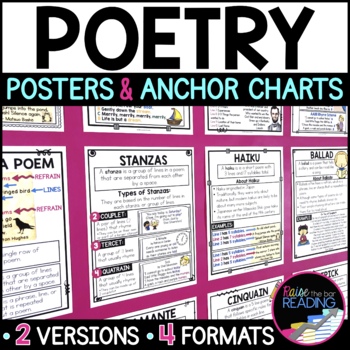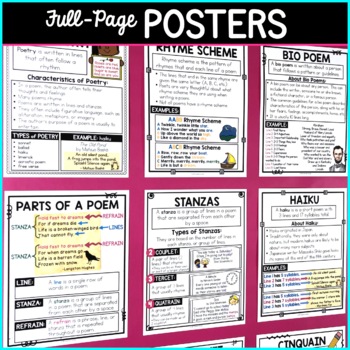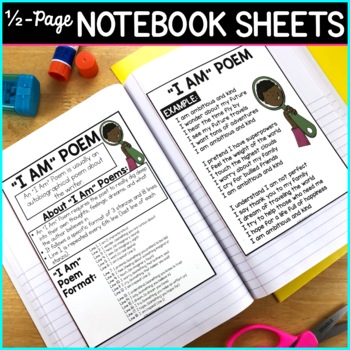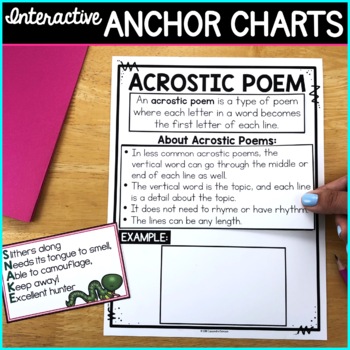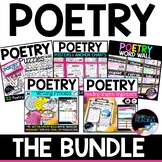Poetry Posters Anchor Charts, Types & Elements of Poetry Writing for Poetry Unit
- PDF
- Google Apps™

What educators are saying
Also included in
- This reading and writing visuals bundle includes all of the word wall cards, posters, and anchor charts you need to introduce reading and writing concepts and provide visuals for students to reference all year long! This set currently includes over 400 reading and writing word wall cards and currenPrice $103.00Original Price $205.50Save $102.50
- These 150+ reading posters and interactive reading anchor charts are a must have for introducing and reinforcing tons of important reading vocabulary and concepts!Printing flexibility allows for either a poster, an interactive anchor chart, or mini (half page) posters/anchor charts for students' reaPrice $45.00Original Price $52.00Save $7.00
- This Poetry Bundle is packed full of visuals and resources for having students dig deep into reading and writing poetry! WHAT'S INCLUDED:1. Poetry Word Wall: Create a beautiful visual word wall in your classroom to support your students in becoming strong poetry readers! Student-friendly definitionPrice $28.50Original Price $39.00Save $10.50
Description
These Poetry Reading Posters and Interactive Anchor Charts are a must-have for introducing and reinforcing tons of types of poetry and elements of poetry!
Printing flexibility allows for either printing full-page poetry posters, interactive anchor charts, or mini (half page) posters/anchor charts for students' reading notebooks!
Now you can introduce a lesson with a poster or anchor chart, while students are able to interact with them at the same time in their own reading notebooks! Adding them to their own notebooks is the perfect way for students to have easy access to ALL lessons taught, so you don't have to worry about keeping every poster on display throughout the year.
Be sure to take a look at the product preview for a closer look!
30 Poetry Posters/Anchor Charts Include:
- All About Poetry
- Rhyme
- Rhyme Scheme
- Parts of a Poem (Line, Stanza, Refrain)
- Accent/Stress
- Rhythm
- Meter
- Types of Stanzas (Couplet, Tercet, Quatrain)
- Alliteration
- Consonance & Assonance
- Couplet
- Tercet
- Quatrain
- Quintain
- Cinquain (2 Options)
- Haiku
- Sonnet
- Ballad
- Limerick
- Acrostic
- Free Verse
- Diamante
- Bio poem
- "I Am" Poem
- Shape Poem
- Ode
- Prose vs. Poetry
- Theme
- Mood & Tone
- 2 Versions: Two versions are included for the posters - one with more details (more text) and one with less text (larger font).
- 4 Formats: Full-Page Posters, Full-Page Interactive Anchor Charts, Half Page Posters or Anchor Charts, and a digital Google Slides™ format
This product is available at a discount in the Reading Posters Bundle, and at an even larger discount in the Reading & Writing Visuals Bundle!

